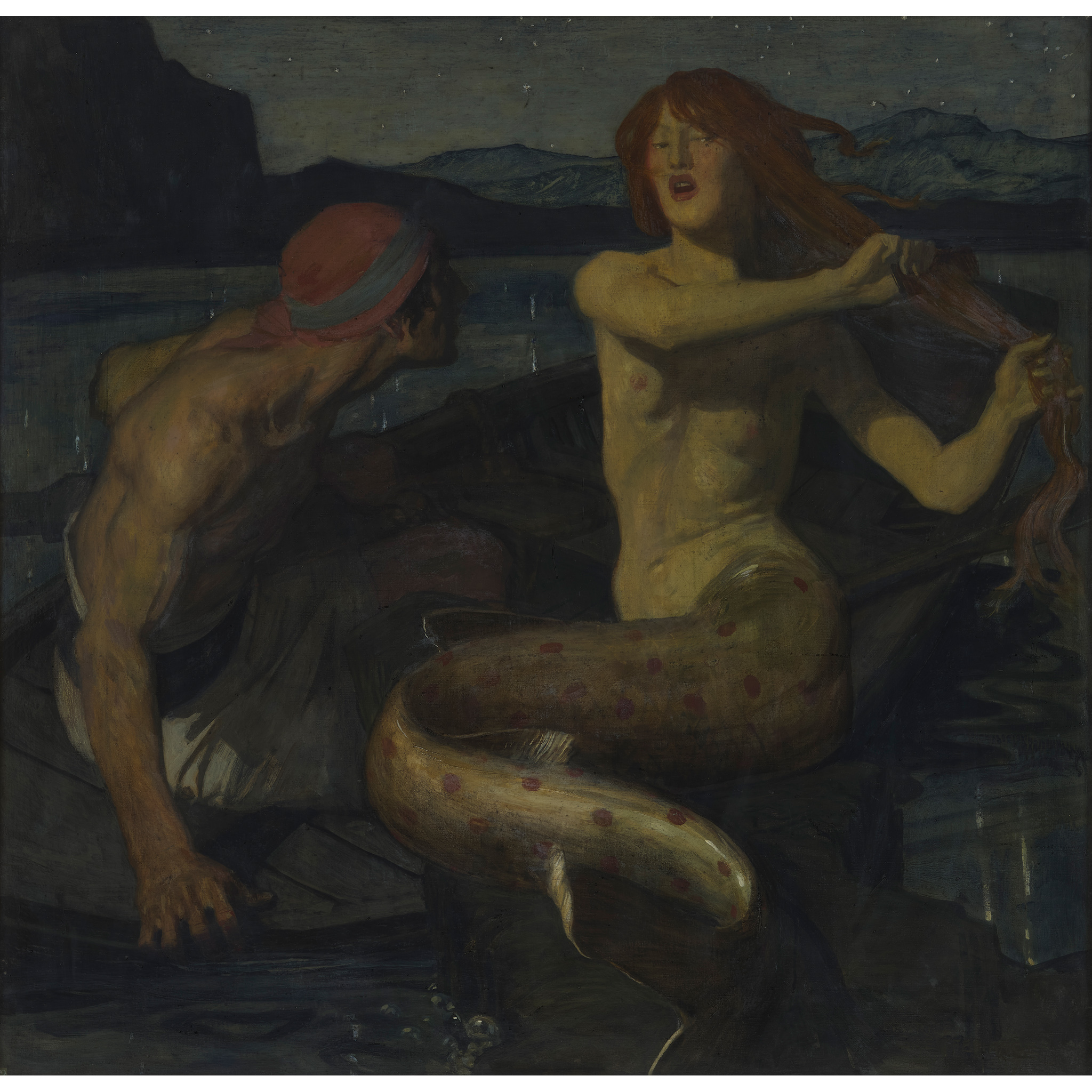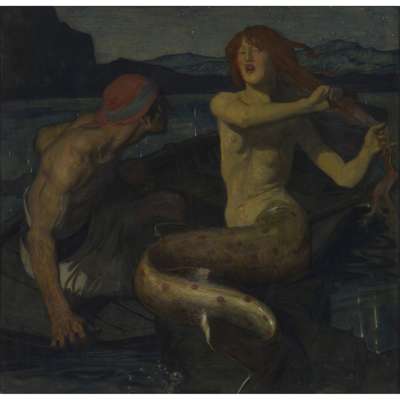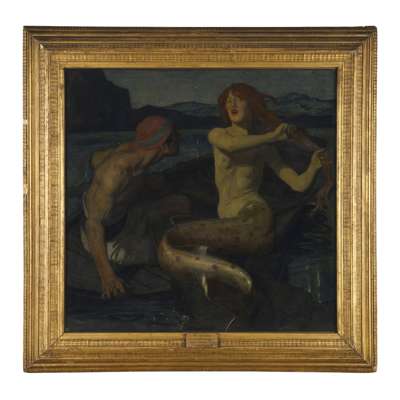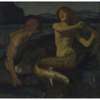
Lot 150

MAURICE WILLIAM GREIFFENHAGEN R.A. (BRITISH 1862-1931)
THE MERMAID








Scottish Paintings & Sculpture
Auction: Evening Sale | Lots 112- 206 | Thursday 05 June from 6pm
Description
Signed and dated 1918, inscribed with title and Artist's address verso, oil on canvas
Dimensions
104cm x 106.5cm (41in x 42in)
Provenance
J. A. D. McKean, Paisley
Presented to Paisley Art Institute by the above in 1919
Exhibited:
Royal Glasgow Institute, Edinburgh, 1928, no.116
Footnote
Mermaids have appeared in folklore across the world for centuries. The mystery of the ocean with its great depths and unsettling turbulence inevitably gives rise to speculation as to what may lie beneath. With the head and torso of a woman and the lower body of a fish, these compelling creatures have unpredictable narratives, being viewed as both symbols of good luck and safety for sailors and as an indication of impending danger. These meanings have enmeshed with the lore around sirens, the beautiful and cruel female creatures of the sea who use their song to lure men to their deaths. Mermaids are also imbued with a sense of longing: they yearn for a life on land which they can’t physically survive, while humans, in turn, covet the mermaid exoticism and beauty; it is an eternally doomed relationship. This atmosphere of longing is what Greiffenhagen so dramatically captures here. The sinuous bodies of both figures are captured in a dynamic tension with each other, with the mermaid’s auburn hair and glistening tail filling the right-hand side of the composition and compelling the sailor towards her. The aquatic background throws their pale skin and her glittering scales into sharp relief, its sumptuous dark blues enriching the scene as the shimmering reflections are picked up in dotted highlights. The mermaid is depicted combing out her long lustrous hair, a common symbol associated with both vanity and the sea that highlights her beauty and allure.
Maurice Greiffenhagen had a strong sense of design. He worked extensively on book illustrations and commercial posters, as well as painting, throughout his career. From 1906 until1926 he taught at Glasgow School of Art as Professor of the Life Classes, though he attended the school as little as was feasible to allow the maintenance of his own art practice in London. The students were left day-to-day in the capable hands of his assistant professors, including fellow artist David Forrester Wilson (see lot 154). Greiffenhagen uses The Mermaid as an opportunity to display his talent for both compelling design and proficient life drawing, alongside his enjoyment of rich colour and ability to create a unified decorative scheme, with the background rich and shimmering around the central drama.
Greiffenhagen’s most famous work is An Idyll of 1891, a dramatic decorative work of a shepherd grabbing a woman in a moment of passion, surrounded by pastureland dotted with red poppies. It gained great popularity and ultimately inspired D.H. Lawrence’s debut novel, The White Peacock. Lawrence felt that this painting was a visual representation of the word passion and wrote from that place. This symbolist understanding of art as a means to convey emotion and feeling rather than represent life is a further lens through which to understand The Mermaid. There is a story here, but we don’t quite know what it is; instead, there is a strong atmosphere of suspense and desire. A striking image, this lush painting celebrates the enduring allure, drama and mystery of beautiful women and the sea.







